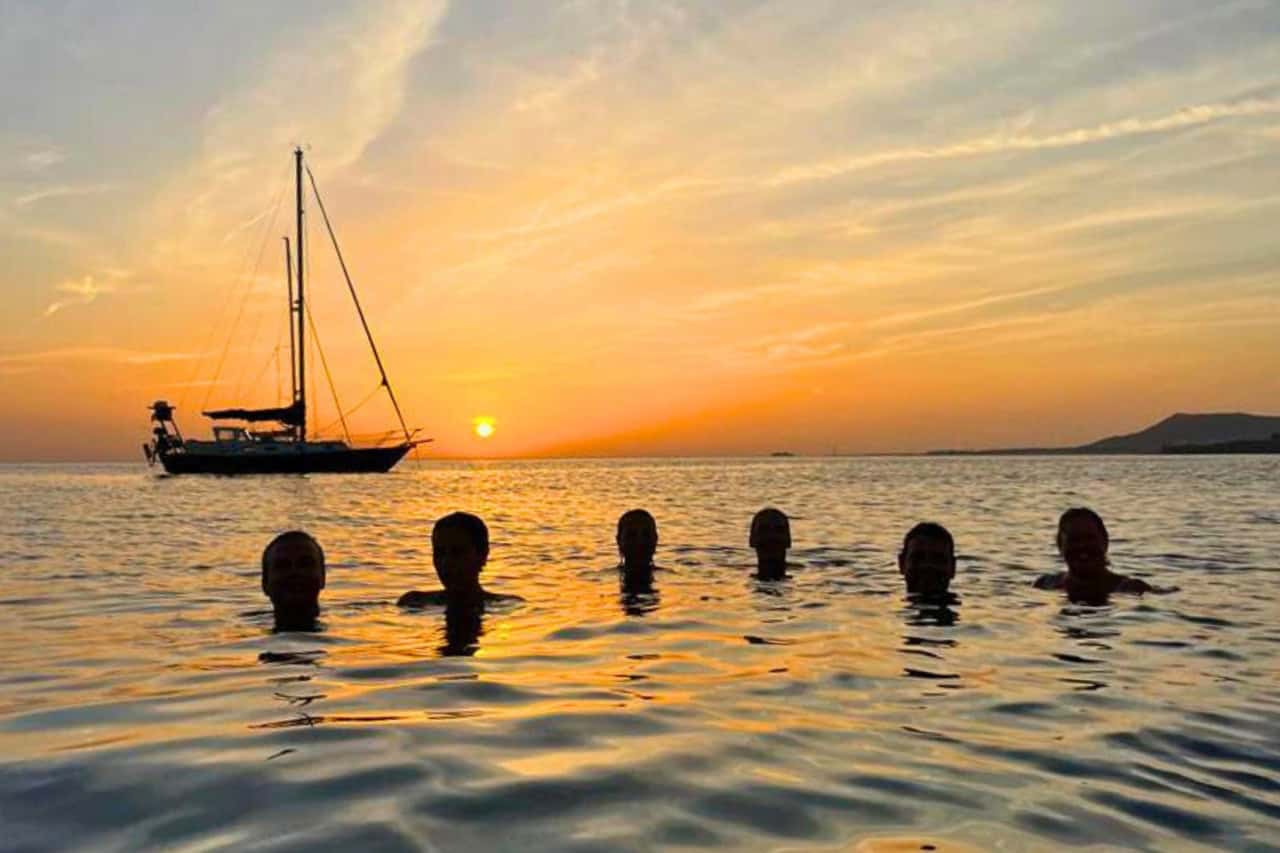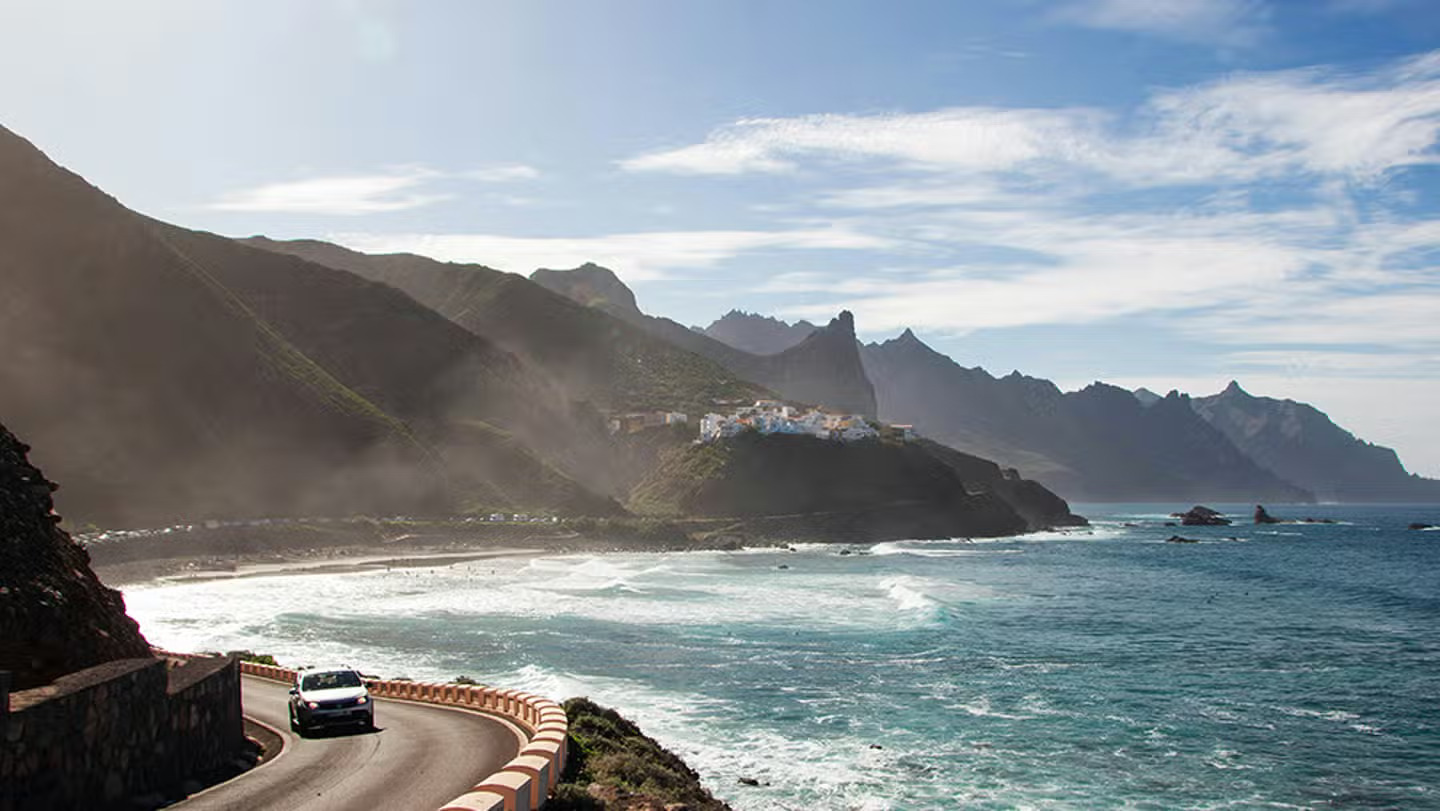The Canary Islands are where volcanic peaks meet golden beaches, ancient forests touch the clouds and spring-like weather lasts all year. Sitting in the Atlantic Ocean off the northwest coast of Africa, this Spanish archipelago is one of Europe’s most diverse and reliable sun destinations — perfect for beach lovers, hikers, road-trippers, surfers and families alike.

This Canary Islands Travel Guide is your starting point. From here you can explore detailed guides to the best beaches, top destinations, local food, outdoor activities, practical travel tips and much more. Think of this page as your overview map; each link below opens a specialist guide with deeper information and inspiration.
Discover the Canary Islands
Officially part of Spain but geographically close to Africa, the Canary Islands are made up of seven main islands:
- Tenerife – home to Mount Teide, black-sand beaches and lively resorts.
- Gran Canaria – a “mini continent” of dunes, cities, forests and coves.
- Lanzarote – surreal volcanic landscapes, design by César Manrique and excellent wine.
- Fuerteventura – Caribbean-style lagoon beaches and year-round wind sports.
- La Palma – dramatic volcanoes, lush forests and world-class stargazing.
- La Gomera – deep ravines, ancient laurel forests and quiet coastal villages.
- El Hierro – natural rock pools, eco-tourism and pristine marine life.
Together they offer everything from easy resort holidays to adventurous road trips through lava fields and mountain passes. If you’d like a fuller introduction to the region’s geography, culture and history, start with: About the Canary Islands.

Quick Fast Facts
- Location: Atlantic Ocean, off the northwest coast of Africa
- Country: Spain (special autonomous community)
- Main islands: Tenerife, Gran Canaria, Lanzarote, Fuerteventura, La Palma, La Gomera, El Hierro
- Climate: Subtropical, mild all year (“Islands of Eternal Spring”)
- Currency: Euro (€)
- Official language: Spanish (English widely spoken in tourist areas)
- Time zone: GMT (one hour behind mainland Spain)
For a compact, data-style overview of population, climate and key numbers, visit: Canary Islands Fast Facts.
How to Use This Travel Guide
To keep things simple, we’ve broken the archipelago into focused guides. From this page you can jump straight to the topic that matters most to your trip:
- Top Destinations: Explore the must-visit areas, resort towns and scenic regions across all islands in Top Destinations in the Canary Islands.
- Beaches: From golden dunes to black-sand coves and natural pools, find your perfect spot in Beaches in the Canary Islands.
- Things to Do & Attractions: Volcano hikes, stargazing, water sports, cultural towns and more in Things to Do in the Canary Islands and Attractions in the Canary Islands.
- Food & Restaurants: Learn what to eat and where to eat it in Food & Drinks in the Canary Islands and Restaurants in the Canary Islands.
- Weather & Best Time to Go: Month-by-month temperatures, rainfall and sea conditions in Weather in the Canary Islands.
- Essential Travel Tips: Health, safety, money, transport, SIM cards and practical advice in Travel Tips for the Canary Islands.
Who Will Love the Canary Islands?
Because each island has its own mood and landscapes, the Canary Islands work for many different types of travellers:
- Beach lovers: Long sandy beaches in Fuerteventura and Gran Canaria, calm family coves in Lanzarote and Tenerife.
- Hikers & nature enthusiasts: Cloud forests in La Gomera, volcanic ridges in La Palma, national parks on multiple islands.
- Adventure travellers: Surfing, windsurfing, kitesurfing, diving, paragliding and mountain biking.
- Families: Safe resorts, short flight times from Europe and plenty of child-friendly activities.
- Couples & slow travellers: Quiet villages, boutique hotels and dramatic viewpoints ideal for road trips.

When Is the Best Time to Visit?
One of the biggest advantages of the Canary Islands is that there is no single “off season”. Thanks to stable subtropical weather, you can plan a trip at almost any time of year:
- Winter (Dec–Feb): Escape the cold, enjoy mild temperatures and excellent hiking conditions.
- Spring (Mar–May): Green landscapes, wildflowers and fewer crowds.
- Summer (Jun–Sep): Warmest sea temperatures and long beach days.
- Autumn (Oct–Nov): Great balance of warm water, good visibility for diving and pleasant daytime temps.
For travellers who like to match activities with specific months (e.g. surfing, stargazing, whale watching), our dedicated guide at Weather in the Canary Islands gives much more detail.
Start Planning Your Canary Islands Trip

Whether you’re dreaming of a simple week on the beach, a multi-island road trip, or an active holiday filled with hiking and water sports, the Canary Islands are one of the easiest places in Europe to plan a flexible, weather-proof escape. Use this page as your hub, then dive into the detailed guides linked above to shape your perfect itinerary.
From here, the best next step is to choose what matters most to you:
- Need a general overview? Start with About the Canary Islands.
- Looking for inspiration? Browse Top Destinations and Things to Do.
- Planning a beach holiday? Go straight to Beaches in the Canary Islands.
- Curious about food? Explore Food & Drinks and Restaurants.
- For practical preparation and on-the-ground advice, visit Travel Tips for the Canary Islands.
However you choose to explore them, the Canary Islands reward curiosity: drive a little further, walk one more trail or stay out for one extra sunset and the archipelago always seems to reveal something new.
